It’s time to dive into this riveting adventure to the Veiled Lands!
Click here to download the map of Veiled Lands and get the young readers settled in for a fun and calming colouring session!
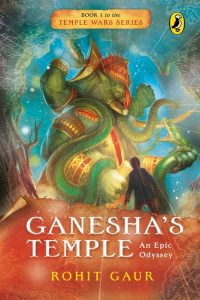
It’s time to dive into this riveting adventure to the Veiled Lands!
Click here to download the map of Veiled Lands and get the young readers settled in for a fun and calming colouring session!

We are bringing to you a fun-filled activity for the kids!
Click here to download and fill your very own pocket of good deeds!
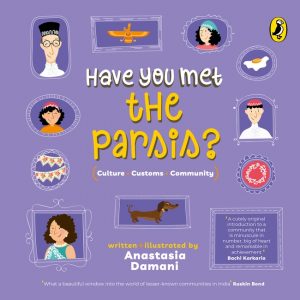
Samina Mishra’s Jamlo Walks, though filled with beautiful and colourful illustrations, in not a happy story, but it contains an extremely important message, the dissemination of which is imperative for the future generation. In many ways, it is reminiscent of Hans Christian Andersen’s stories. Not Little Mermaid or Ugly Ducklingwhich have been glorified or retold with happy endings. It is more like the Little Match Girl, which is a lesser known tale about a girl who tries to sell matchsticks on New Year’s Eve, but cold and unsuccessful, she collapses, a victim to lack of empathy, much like Jamlo.
Jamlo Walks is a book meant to bring awareness to its young readers who span from ages seven to nine, of the plight of other children and people not very different from themselves, but who are faced with completely different circumstances.
Here is a glimpse into the author’s mind to give you some insight into how and why she created this sad, yet beautiful story.
~
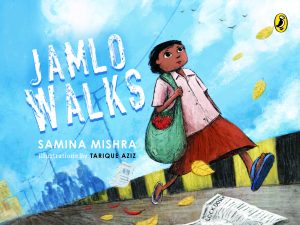
Where do ideas come from? There are no clear answers to this question but certainly, some ideas come from what we experience and observe. Jamlo Walks came to me sometime in April last year. I don’t think I actively decided to write the story – the first draft just came in one sitting. I think it came as a response to the vulgar inhumanity that was on display last year – and continues to be even now. The working class, in conjunction with caste, has always been treated differently but what we have seen in the pandemic has been naked and ugly like never before. The stark images of the migrants walking through the night, out of Delhi on the Yamuna bridge, the middle class apathy on social media, the way domestic workers were treated at colony gates, police thrashing common citizens… Jamlo’s story was reported as one casualty in this series of unending tragedies. It was heartbreaking. It made me think of what these experiences means for all children – how are they to think about these stark divides across different childhoods, would they go on to continue institutionalizing this inhumanity… So, I think the first draft just came out of a need to respond to all this.
Once an idea arrives in its own mysterious way, our job as creative practitioners is to wrestle with it and hone it. We have to make choices and take decisions about what we want to do with it and shape the work. That was perhaps more of a challenge with this one because of the content. Picture books are generally seen as books for young readers and though we know that that is not true, putting this story out threw up questions around readership for me. Was the story too grown-up? Was the form of the story something children could understand and respond to? It was important that I try and answer these questions for myself. For me, it’s a picture book that I hope children across ages will read, that will prompt them to reflect.
While I was writing and rewriting, trying to make it a story that could be shared with the world, the thing that was important to me was to make Jamlo a person, a layered character, and not just the girl we read about in the news reports. This was not easy given the pandemic. My practice is very connected to being on the ground, getting out, talking to people. But here I was – in lockdown – without access to details on the ground that normally build context in my work. So I tried to imagine the inner world of the child, for Jamlo and for the other children in the story. I hope that works. I hope that readers find a bit of themselves in Jamlo and/or the other kids. And I hope that Jamlo is remembered so that we do not witness another such incident.
We have adored Adil ever since we got our hands on the book. We chatted with Lavanya Karthik, the author of When Adil Speaks, about her creative process, favourite books, and more!
How did Adil come into being?
LK: Adil was a little glimmer of an idea in my head for a long while. I wanted to explore the idea of communication in a picture book. I wanted to address the idea of diversity, as well as look at the little things that make us all the same – fear of not being accepted, shyness, wanting to be heard and seen. And I was fascinated by sign language. I realised I could do all of this in one book and, slowly and steadily, these ideas developed into ‘Adil’.
What was your creative process behind a children’s book on inclusivity?

LK: While the central character is disabled, I did not want that to be the focus of the book. Rather, it is his personality that stands out – he is fun, popular, a great athlete. I wanted this book to be about communication, and finding ways to connect. And what better way to connect than through art!
This book then evolved quite organically, as I imagined how the story of Adil and his friend would develop, and how they would figure out a way to ‘speak’ without words. Comics seemed the obvious choice; whenever I visit schools or conduct workshops, I find that kids – from the quietest ones to the noisiest, from municipal schools and elite private institutions – love drawing comics. They dive right in, drawing themselves as superheroes, confronting demons, making great speeches. filling up pages and pages with art and ideas. Then they would gather around, inspecting each other’s comics. What better way to make friends!
If you had to recommend a reading list on inclusivity for children (or adults!), which books would you add to it?
LK: This would really be a very, very long list! To narrow it down to a very short one,
Picture Books
Middle Grade
YA
Inclusivity and the idea of embracing difference is still a severely stunted conversation in the country. Do you think some level of sensitivity training should be mandatory, particularly for people working in educational institutions?
LK: I think we need to see inclusion as a basic human right and not as an act of benevolence. We need schools and playgrounds, systems and processes that can be accessed by everyone, and that acknowledge diversity, not enforce sameness. Sensitivity training is definitely important as a first step to enabling this.
February may be the shortest month, but that doesn’t mean our list of new reads won’t be long! Here are some brand-new delights to make this month fabulous for you and the little ones:
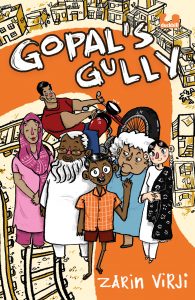
Gopal’s Gully
by Zarin Virji
When Gopal’s mother dies, his uncle brings him to Mumbai to get a job because he has few prospects as a Dalit boy in a UP village. Gopal is cast into the unfamiliar world of Squatters Colony, where he has no family or friends. He gets his first job at the bicycle shop owned by the sage Chacha and rapidly makes friends with the strange and diverse people who live in the community – Chacha’s friendly daughter-in-law, the neighbourhood thug Raja, the three-legged Tiger and beautiful Ayesha. And he learns that when disaster strikes and lives fall apart, he too has a family in the gully.
Eeks Series
by Arthy Muthanna Singh & Mamta Nainy
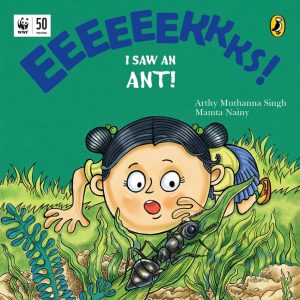
Eeks! I Saw an Ant!
Ants are small but that’s not all! Enter the jaw-dropping world of ants and explore some fascinating facts about one of the most hard-working critters of the insect kingdom!
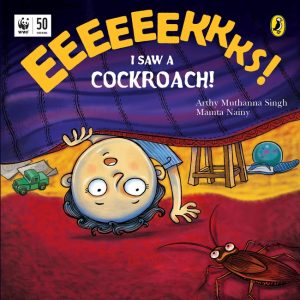
Eeks! I Saw a Cockroach!
Whether cockroaches fill you with dread or wide-eyed wonder, there’s no denying the fact that they are some of the most amazing creatures of the insect universe. So, dash right into their wonderful world, find out everything about them and be prepared to be super surprised!

Eeks! I Saw a Bee!
What’s the buzz about bees? What do they do all day? Why are they important? Find out everything about bees in this buzzing book and discover the big ways in which these little insects contribute to our environment.

Eeks! I Saw a Mosquito!
Mosquitoes are mostly known as tiny troublemakers. But there are lots of interesting facts about these delicate insects. Read this book to find out about their many species, sizes, diets, homes and-most importantly-why they bite!
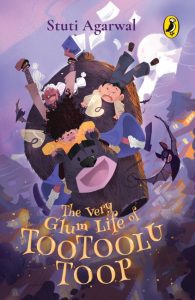
The Very Glum Life Of Tootoolu Toop
by Stuti Agarwal
‘To every witch, wizard and glum, I’m Tootoolu Toop, a ten-year-old, fully trained witch of the Oonoodiwaga tribe from the Darjeeling mountains. Like every other ordinary human who wants to live a life of magic, us witches and wizards want to experience the non-magical world too (I do for sure). For me, the ‘ordinary’ world is nothing short of an adventure. So I have left my tribe to live life as a glum.
This is my story.’
Tootoolu is on the run. From her mundane life of stirring grasshopper’s legs into potions and her underground home where her tribe has been in hiding for 569 years. Will Tootoolu find what she’s looking for-best friends, books and a chance to be who she truly is?
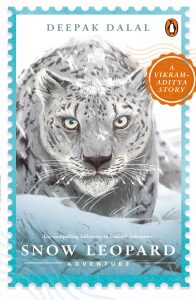
A Vikram–Aditya Story: Snow Leopard Adventure
by Deepak Dalal
Vikram and Aditya are back in magnificent Ladakh. Having finally freed their young friend Tsering from the hands of dangerous men, they’ve set themselves up for an even great challenge: to locate the the grey ghost of the Himalayas, the snow leopard. The boys join a team of ecologists and explorers in their search for this immensely rare and beautiful creature of the wild. But high up in the Himalayas, amidst daunting mountains and dark valleys, everyone has just one question on their mind: how do you study an animal you cannot find? Journey in search of the elusive Snow Leopard with an enthralling tale set in one of India’s most splendid destinations.
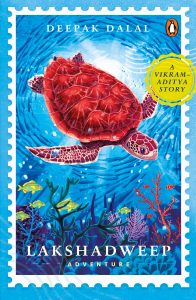
A Vikram–Aditya Story: Lakshadweep Adventure
by Deepak Dalal
Far out in the Arabian Sea, where the waters plunge many thousands of metres to the ocean floor, lie a chain of bewitching coral atolls-the Lakshadweep Islands. Vikram and Aditya dive into lagoons with crystal-clear water and reefs that are deep and shrouded in mystery. But when they stumble upon a devious kidnapping plot, their idyllic holiday turns into a desperate struggle for survival. Forced out into the sea in the eye of a raging storm, they endure a shipwreck, only to be marooned on a remote coral island. Journey through these breathtaking islands with a tale of scuba diving and sabotage, set in one of India’s most splendid destinations.

The Desolations of Devil’s Acre
by Ransom Riggs
The last thing Jacob Portman saw before the world went dark was a terrible, familiar face.
Suddenly, he and Noor are back in the place where everything began – his grandfather’s house. Jacob doesn’t know how they escaped from V’s loop to find themselves in Florida. But he does know one thing for certain: Caul has returned. After a narrow getaway from a blood-thirsty hollow, Jacob and Noor reunite with Miss Peregrine and the peculiar children in Devil’s Acre. The Acre is being plagued by desolations – weather fronts of ash and blood and bone – a terrible portent of Caul’s amassing army.
Risen from the Library of Souls and more powerful than ever, Caul and his apocalyptic agenda seem unstoppable. Only one hope remains – deliver Noor to the meeting place of the seven prophesied ones. If they can decipher its secret location. Jacob and his friends will face deadly enemies and race through history’s most dangerous loops in this thrilling page-turner, the final adventure in the beloved Miss Peregrine’s Peculiar Children series.

How To Change Everything
by Naomi Klein
‘Young people are not just part of the climate change movement. They are
leading the way. Will you be one of them?’
Forget everything you think you know about climate change. Klein presents her urgent message about saving the environment by asking three simple questions: Where are we? How did we get here? What happens next? From the Great Barrier Reef to Hurricane Katrina to school environmental policies to Greta Thunberg – climate change impacts every aspect of the world you live in. How to Change Everything will provide readers with clear information about how our planet is changing, but also, more importantly, with inspiration, ideas, and tools for action. Because young people can help build a better future. Young people can help change everything.

The Hatmakers
by Tamzin Merchant
Cordelia comes from a long line of magical milliners, who weave alchemy and enchantment into every hat. In Cordelia’s world, Making – crafting items such as hats, cloaks, watches, boots and gloves from magical ingredients – is a rare and ancient skill, and only a few special Maker families remain. When Cordelia’s father Prospero and his ship, the Jolly Bonnet, are lost at sea during a mission to collect hat ingredients, Cordelia is determined to find him. But Uncle Tiberius and Aunt Ariadne have no time to help the littlest Hatmaker, for an ancient rivalry between the Maker families is threatening to surface. Worse, someone seems to be using Maker magic to start a war. It’s up to Cordelia to find out who, and why.

Darklands
by Arnav Das Sharma
India is reeling from an environmental catastrophe-water has replaced oil as the most valuable commodity and our cities have become nightmarish places infested with gangs, secretive corporations and powerful religious figures. An advanced form of technology enables the manufacture of humans in laboratories. In this dystopia, Haksh, born in a lab, does what he shouldn’t have: he falls in love with a human.
Darklands is a coming-of-age novel about violence and transgression, and above all, love: both all-consuming and redemptive. Dark and bleak, it heralds journalist Arnav Das Sharma as a major new voice in Indian YA fiction.
~
Revamp those bookshelves! It’s going to be an exciting month for the young ones (and the older ones!)
The hOle Books are incredibly fun and delightful. Full of beautiful illustrations, they bring to life the lives of young protagonists who face challenges and emerge more well-rounded. There are a million reasons to pick up any of these books. Here are a few:
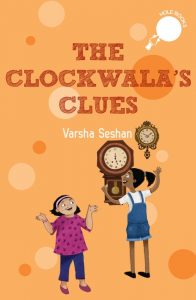
The Clockwala’s Clues
by Varsha Seshan
Varsha Seshan’s The Clockwala’s Clues will keep you glued to its pages. Jasmine and Sheba want to get stray puppies off the street by encouraging people to adopt them. But Sheba has a problem managing her time, and her father is going to send her off to learn time management over the summer. Who will adopt the puppies then? How will Jasmine manage this feat on her own?
This quick read is more than the adventures of two girls. It is also a fantastic look into solving real parenting issues in creative ways, ways that do not punish children for their excitement and innocent curiosities, but enable them to approach things as challenges.
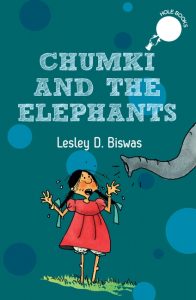
Chumki and the Elephants
by Lesley D. Biswas
It is a universal fact that Chumki’s Dadi loves sooji ka halwa. So Chumki is naturally stunned when her Dadi feeds her the entirety of the portion given to her. But in the midst of this domestic confusion, some elephants escape from a nearby reserve. Dadi remembers the last time that the elephants came; now that they are here again, will it help her regain her memory?
Lesley D. Biswas’s adorable story works with some serious themes under the surface – a beloved grandmother who is losing her memory, forgetting her own granddaughter’s name cannot be easy to tackle, but Biswas integrates this wonderfully into the story.
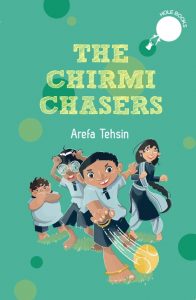
The Chirmi Chasers
by Arefa Tehsin
Nanka’s father Doonga wants to host an inter-school sitola match, which is highly unconventional for everyone he knows. If they win, they will be able to use the sports facilities of Madhopur High to train their students.
If they lose, he will quit his job.
Having picked a rag-tag team of four unlikely players, Doonga proceeds. But will they win?
This is a story not simply about an exciting match with high stakes but also a great exercise on building a team. It shows us that a team can be formed out of unlikely people, that any time people come together to do something and put their mind to it, anything is possible.
~
Share these wonderful books with your young ones; few things are more precious than discovering new worlds with your little readers.
Sudha Murty’s stories are eternal. We finish the books, we keep them back in the shelves, but we can never forget the wonder inspired by her stories and the fascinating characters she crafts. Here are some of her timeless classics that we keep returning to:
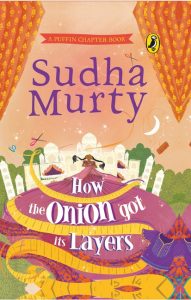
How the Onion Got Its Layers
Have you noticed how the onion has so many layers? And have you seen your mother’s eyes water when she cuts an onion? Here is a remarkable story to tell you why.
India’s favourite storyteller brings alive this timeless tale with her inimitable wit and simplicity. Dotted with charming illustrations, this gorgeous chapter book is the ideal introduction for beginners to the world of Sudha Murty.
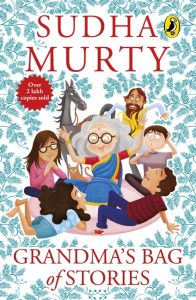
Grandma’s Bag Of Stories
Who can resist a good story, especially when it’s being told by Grandma? From her bag emerges tales of kings and cheats, monkeys and mice, bears and gods. Here comes the bear who ate some really bad dessert and got very angry; a lazy man who would not put out a fire till it reached his beard; a princess who got turned into an onion; a queen who discovered silk, and many more weird and wonderful people and animals.
Grandma tells the stories over long summer days and nights, as seven children enjoy life in her little town. The stories entertain, educate and provide hours of enjoyment to them. So come, why don’t you too join in the fun?
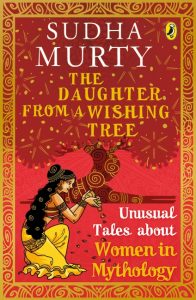
The Daughter from a Wishing Tree
Did you know that the Trinity often turned to goddesses to defeat the asuras?
Did you know that the first clone in the world was created by a woman?
The women in Indian mythology might be fewer in number, but their stories of strength and mystery in the pages of ancient texts and epics are many. They slayed demons and protected their devotees fiercely. From Parvati to Ashokasundari and from Bhamati to Mandodari, this collection features enchanting and fearless women who frequently led wars on behalf of the gods, were the backbone of their families and makers of their own destinies.
India’s much-loved and bestselling author Sudha Murty takes you on an empowering journey -through the yarns forgotten in time-abounding with remarkable women who will remind you of the strong female influences in your life.
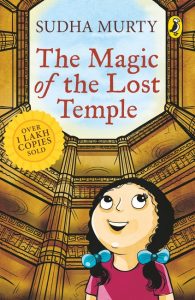
The Magic Of The Lost Temple
City girl Nooni is surprised at the pace of life in her grandparents’ village in Karnataka. But she quickly gets used to the gentle routine there and involves herself in a flurry of activities, including papad making, organizing picnics and learning to ride a cycle, with her new-found friends.
Things get exciting when Nooni stumbles upon an ancient fabled stepwell right in the middle of a forest.
Join the intrepid Nooni on an adventure of a lifetime in this much-awaited book by Sudha Murty that is heart-warming, charming and absolutely unputdownable.
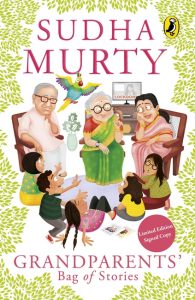
Grandparents’ Bag of Stories
It’s 2020 and children are stuck indoors as the novel coronavirus finds its way into India. A nationwide lockdown is announced and amidst the growing crisis, Ajja and Ajji welcome their grandchildren and Kamlu Ajji into their house in Shiggaon.
From stitching masks, sharing household chores, preparing food for workers to losing themselves in timeless tales, the lockdown turns into a memorable time for the children as they enter the enchanting world of goddesses, kings, princesses, serpents, magical beanstalks, thieves, kingdoms and palaces, among others. The myriad stories told by their grandparents become the biggest source of joy, making the children compassionate, worldly-wise and more resilient than ever.
Following the trail of the best-selling Grandma’s Bag of Stories, India’s favourite author Sudha Murty brings to you this collection of immortal tales that she fondly created during the lockdown period for readers to seek comfort and find the magic in sharing and caring for others. Wonderfully woven in her inimitable style, this book is unputdownable and perfect for every child’s bookshelf!
~
Our bookshelves have an entire section dedicated to Sudha Murty. That’s just how our young readers like it! What about you?
Written centuries ago, the epic Mahabharata continues to hold relevance in modern times. Read and savoured across ages and cultures, the legendary tale is a literary treasure of unmatched grandeur. Namita Gokhale retells this timeless tale of mortals and immortals and stories within stories, of valour, deceit, glory, and despair in The Puffin Mahabharata. Today, we are sharing with you some of her favourite characters from the book and the reason they enjoy a special place in her heart.
By Namita Gokhale, the author of The Puffin Mahabharata
**
The Mahabharata is full of characters and stories for every age and culture. When I wrote The Puffin Mahabharata, I researched many sources and texts, trying to extract the essence of the narrative for young readers. The one character that reached out to me from across time to leap into my heart was Ghatotkacha, the son of Bhima by the royal Rakshasi Hidimbi. The courage and strength that Ghatotkacha and his mother Hidimbi displayed at every turn of their lives reached out to me at a primal level. I was upset and angry that this heroic figure never received his due in the epic. The Battle of Kurukshetra was won only by the valour and sacrifice of Ghatotkacha, the first-born son of the five Pandava brothers. I resolved then, while working on the first draft of the Puffin Mahabharata, that I would dedicate another future book entirely to the story of Ghatotkacha and his valiant mother. I kept my promise to myself, and wrote Lost In Time: Ghatotkacha and the Game of Illusions as my tribute to a great and wonderful being.
Ghatotkacha was a Rakshasa of demon lineage from his mother’s side. This gave him many extraordinary magical skills, including the ability to conjure up illusions through the miraculous use of Maya. On the fourteenth night of the great battle between the Pandavas and the Kauravas, Ghatotkacha summoned all his reserves of mystical power to confuse and intimidate the enemy forces. His war cries sent shivers of fear through the Kaurava camp, and his savage team of rakshasas were almost invincible. He was in battle with Karna, whose arrows could never find their target because Ghatotkacha could change his form at will. Karna used his ultimate weapon, the Shakti, to pierce the magical cloak with which Ghatotkacha had defended himself. Even as he fell to earth, he willed his body to swell and grow so that it landed on the Kaurava camp, destroying their warriors with this last sacrifice. It was him who changed the course of the battle and led to the Pandavas’ ultimate victory.
Hidimba remained ever loyal to her husband Bhima, even though he returned to his wandering after marrying her. Ghatotkacha grew up raised only by his mother, but his love and loyalty to his father was as strong as it was pure. Yet they are often forgotten amidst the many other heroic figures in the Mahabharata, though they will always have a special place in my heart.
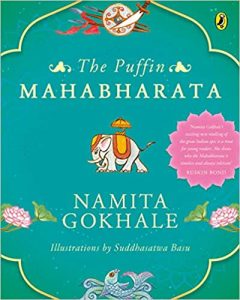
And then there are the figures of Karna and Krishna. Both mighty and invincible heroes, one the son of Surya, the mighty Sun god, and the other a god himself. Krishna is perhaps the most beloved of all the Hindu gods, worshipped across India for his mischief, love and compassion. He guided the Pandavas to victory through all the suffering and injustice they encountered. Krishna was a master of strategy, and his advice was always tinged with genius. Yet, towards the end of the epic, he too met a tragic fate. The hunter Jara, mistaking Krishna for a deer, aimed his arrow at him through the forest foliage. The sage Durvasa had granted Lord Krishna the boon of invulnerability all over his body, except in the soles of his feet. That was where Jara’s arrow pierced him, and went through his body, all the way to his head. He cried out in pain and Jara discovered to his horror and dismay that he had taken aim at none other than Lord Krishna himself. Fate and destiny work in mysterious ways and Krishna’s soul ascended to the heavens, his time on earth over.
Karna was the eldest child of mother Kunti and in reality the oldest of the Pandavas. Yet he was abandoned by his mother at birth and adopted by the charioteer Adiratha and his loving wife. What strikes me most about Karna is his endless generosity, his capacity to give and to forgive. Sometimes life places us in difficult situations and it is our ability to remain true to ourselves that carries us through.
The life lessons of the Mahabharata are important for all ages. They are about defeat as well as victory, humility as well as courage. The Mahabharata, the greatest story ever told, remains true to life and full of learnings even as it is told and retold through generations and across millennia.
**
I have always believed that stories are a great tool for disseminating ideas. When you read a good book, the story grips you and you sponge in the concepts the writer weaves in. Children are receptive, they are open to ideas. Adults are hardened versions of children and stories – as a means for influencing the reader – grow less effective. This is why I find writing for children far more rewarding.
Apart from this I empathise with children and I enjoy spending time with them. By no means can I call myself young, yet I like to believe that there are a lot of childlike qualities in me.
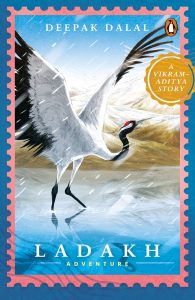
The threat to the well-being of our planet is very real. Across land, freshwater and the oceans, human activities are forcing species populations and natural systems to the edge. There have been 5 mass extinction events in the 4.5 billion years that the earth has existed. Each of them due to natural causes. It is the current belief that we are in the midst of the sixth mass extinction and this one is entirely due to humans and our activities.
Most children live in cities today, entirely disconnected from the natural world. Through stories set in wilderness destinations I try to connect children with wildlife, forests and the great beauty of our planet. My hope is that if at a young age they can be drawn to the natural world, they will help in saving what remains of it.
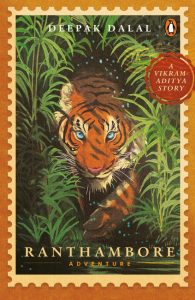
We have some of the best wildlife scientists and conservationists in the world. Several species have been brought back from the brink through their efforts. These include animals like the tiger, the snow leopard, the rhinoceros, and birds like vultures and the amur falcon. But it isn’t all hunky dory. In spite of our best efforts, we are about to lose the Indian bustard and with the shrinking of wildlife habitats many more creatures will disappear. The loss of forests and wildlife isn’t for lack of effort on the part of conservationists. Rather it is the absence of political will and the apathy of our public – for most of whom wildlife is inconsequential – that is at the root of the problem.
I spend a lot of time researching my books. I travel to the destination where the story is set and hook up with wildlife conservationists who are studying animals there. This could be people who are studying tigers, or snow leopards, or marine scientists researching oceanic creatures. These researchers take me into wilderness areas where others can’t visit and it is my experiences with them that provide the backbone to my stories and help me describe animals and landscapes with clarity and detail.
One can’t do away with human-animal conflict. It will always exist. But we can significantly reduce the conflict. Today wildlife exists in isolated forests, most of them small and inadequate for species like elephants that roam in search of food. Wildlife scientists are campaigning for building corridors (stretches of jungle) that will connect the forests and allow animals to move unhindered from one forest to another. These corridors are vital for reducing tragic encounters between animals and humans.
—
It is not for nothing that Devika Rangachari’s new book is called Queen of Earth; we have been conquered completely by this wonderful historical narrative. Rangachari’s research is urgent and important, and has given us a book that is poignant and inspiring in equal parts. We had a chat with the author and it was delightful.
Prithvimahadevi and her rule over the Bhaumakara dynasty in the ninth century CE formed part of my post-doctoral research on gender in early medieval Odisha. It was an extension of my doctoral research whose underlying essence was the manner in which women have been made practically invisible in the historical record due to an existing gender bias. The silences pertaining to Prithvimahadevi in the annals of the Bhaumakaras were intriguing given that the records of her family, the Somavamshis, indicate that she held her own over this rival dynasty for a period of time. The content of the inscriptions that she issued also contains clues to her political sagacity and shrewdness.
Most historians, on the other hand, in keeping with the ubiquitous gender bias that governs the writing of history, tend to ignore Prithvimahadevi’s rule or dismiss it in a few grudging sentences, implying that her rule precipitated the downfall of the Bhaumakaras. Her story and the manner in which she has been viewed in later ages formed an immediate and striking parallel with Didda, the protagonist of my earlier work, Queen of Ice, who has been similarly vilified for being a strong and ambitious woman. It was for these reasons that I chose Prithvimahadevi as the protagonist of Queen of Earth. The story of this remarkable woman deserves to be more widely-known.
The manner in which history is taught in schools only serves to deepen the gender bias that exists in the writing of past narratives. Textbooks continually underline the apparent irrelevance of women to the historical record by only focusing on what clothes or jewellery they wore and being arbitrary in their selection of names to include in the historical sequence. As a result, the overwhelming impression conveyed is of the men always being at the centre-stage of the polity, society and economy in the past, driving all the action and doing the things that mattered, while the women stayed indoors obsessing over what to wear.
This, as a gender historian like me knows, flies in the face of actual evidence. Original sources, such as texts, inscriptions and coins, reveal the palpable—and often powerful— presence that women had in all stages of history and it is very important to acknowledge this if we are to understand the past at all. Gender-sensitive historical fiction would go a long way in correcting this lopsided historical record—and this is the reason I wrote Queen of Ice and Queen of Earth, featuring strong women characters who left a mark on history but who have been virtually erased from it, legitimate parts of their collective past that children would probably never get to know about.
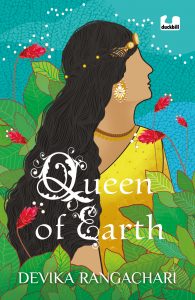
That is a rather tough question to answer! I read voraciously—anything and everything I could lay my hands on—so I had a very long list of favourite writers when I was growing up. To add to that, my school librarian realised that I was an advanced reader at a very early stage and challenged me with books that were way beyond my age range, so I discovered some wonderful writers through her, too. I loved Enid Blyton, of course, but not her most popular stories, such as her Famous Five series. Instead, I preferred her standalone books, such as The Six Bad Boys, The Family at Red-roofs and The Put-em-rights. I also loved Elinor M. Brent-Dyer’s riveting Chalet School series about a school that started in the Austrian Tyrol and then moved to Guernsey and, subsequently, Switzerland. As I grew older, I added P.G. Wodehouse, Agatha Christie, Georgette Heyer, Mary Stewart and A.J. Cronin to my list of favourites.
Touch Not the Cat by Mary Stewart, Up the Down Staircase by Bel Kaufman and The Code of the Woosters by P.G. Wodehouse. And a million others that I want to mention!
My early school stories regularly featured characters based on me and my friends. However, as my focus is on historical fiction now, my acquaintance with my characters is only through research. It must be noted, though, that Didda and Prithvimahadevi, the protagonists of my latest books, are very relatable people whose dreams, motives and actions have familiar resonances.
Fried, mashed, roasted, boiled, baked—all forms of the potato are delicious—and eminently welcome. Wondering about potato ice-cream but not sure it’s a good idea!

The British Council Library in Delhi and the Dr. B.C. Roy Memorial Children’s Reading Room and Library, also in Delhi, are my favourites. The place I most want to visit, though, isn’t a library but a museum and visitor centre dedicated to children’s literature—Seven Stories, the National Centre for Children’s Books in Newcastle upon Tyne, England. Not only does it curate its own exhibitions of the best children’s books, including original manuscripts and illustrations, but it also hosts workshops, seminars and author and illustrator visits throughout the year. I think I could live there perfectly well!
I am more a reader than a writer, so I could spend the entire day quite happily between the pages of a book. However, deadlines have an unnerving habit of looming, so that is when I write and then usually in the morning for a couple of hours. I do it fairly fast with very few drafts, so the entire process doesn’t take too long. Mine is a rather flexible work pattern!
I can’t really choose! I would probably keep an entire day for meeting my favourite authors, scheduling different time slots for them and being in a joyous trance all through. There is so much I want to know from them—their motives for writing particular stories, the manner in which they honed their craft, their favourite writers and so on. If I had to choose, though, I would like to meet P.G. Wodehouse for his masterful blending of humour and language, and Hilary Mantel for her exquisite retellings of history.
—
~ We agree with you 100% Devika. Especially about the potatoes. ~